
HDBaseT: Standards vs Throughput
You may well be ‘soaking’ in it right now. Know your chalk from your cheese.
Text:/ Andy Ciddor
Although open standards from a range of internationally-recognised standards-setting bodies lie at the core of the interoperability of some aspects of AV as we know it today, they’re far from being the only way of achieving innovation and interoperability. Indeed, many of our current ‘standards’ are actually the result of groups of companies getting together to develop a product to fill a perceived need and then releasing it into the marketplace. Examples of such apparent standards in common use include, IT’s DVI and its AV cousin HDMI, both of which are the result of industry groups banding together to provide signal interfaces between video devices and display devices.
OPEN SECRET
One disadvantage of the international open standards process is the fact that it is open and requires a number of relatively-prolonged steps to take a proposal for a new standard or a change to an existing standard to finally become ratified. Sometimes this takes so long that the standard is outmoded by the time it’s ratified, or in the case of the most recent updates to the IEEE-802.11 (WLAN/wi-fi) standard, the market decided it couldn’t wait and manufacturers start rolling out products that conform only to an incomplete specification. These ‘draft standard’-compliant products may turn out to be incompatible with the final ratified version of the standard or at the very least need to be upgraded in the field to become compliant. This is the case for millions of ‘draft 802.11n’ wi-fi devices floating about in the world right now and with the new 802.11ac standard likely to be ratified in the next few months, devices such as mobile phones and notebook computers have been shipping with only draft version compliance for a while now.
AVB: WORK IN PROGRESS
In the matter of moving uncompressed high-bandwidth video across our TCP/IP-over-Ethernet networks, there is no standard yet available. While the open AVB (Audio Video Bridging) standard has got to the point where the transmission of low-latency synchronised HD (1080p) audio and video are now possible on a fast Ethernet network, this developing standard is still a long way from the ideal of transporting today’s high resolution formats over cheap Ethernet infrastructure. On the other hand, AVB’s adoption as a high-quality, non-proprietary digital audio transport mechanism, to replace the existing Tower of Babel of competing and incompatible formats is already well under way.
HDMI: GOOD FOUNDATION
After a decade of rapid uptake, and with an reported three billion devices in use, HDMI (High-Definition Multimedia Interface) can indeed transport just about everything needed for high quality, audio, video, data and control. Originating as a group of seven companies who banded together to set up their own proprietary standard for connecting audiovisual devices, the recently-formed HDMI Foundation is a group of some 1300 companies which each pay US$15,000 per year to develop and maintain their standard and use it in their products. While this makes HDMI a de facto standard, there is none of the burden of the processes required by being an open standard when the consortium decides to update any aspect of its technology.
HDBaseT: SOMETHING ELSE AGAIN
HDBaseT is another example of a group of technologists which took an idea and ran with it, without consulting anyone except their venture partners, and then put their idea into a marketplace that didn’t even know that it needed the technology. Although HDBaseT resembles some of the technologies that went before it (it uses familiar cables and includes an Ethernet channel), much of its implementation makes no real attempt to fit within existing standards.
HDBaseT originates from Valens Semiconductor, an Israeli startup formed in 2006 for the express purpose of developing technologies that push a lot of data down inexpensive cable using some clever asymmetrical digital signal processing. Once Valens had developed the transmitter and receiver chips that are its core product, in 2010 it set about finding partner companies that could take advantage of the technology in their own products, whilst helping to create a market for HDBaseT. Determined to start out with a big splash, the original partners in the HDBaseT Alliance were LG Electronics, Samsung Electronics and Sony Pictures Entertainment. Since then Atlona, Crestron Electronics, Epson, Extron Electronics, Microsemi Corporation, Pulse-Eight, Quantum Data, Silver Telecom, SnapAV and Transformative Engineering have joined the Alliance as technology contributors. Another 50 or so companies, including such familiar faces as AMX, Belden, Gefen, Hitachi, Kramer Electronics, Projectiondesign and TV One, are now Adopter members of the Alliance, incorporating HDBaseT technology into their own offerings.
CANING UTP
HDBaseT sets out to wring every last bit of signal throughput from common or garden category 5e or category 6 unshielded twisted pair (UTP) cable terminated with bog-standard, unshielded, plastic RJ-45 (8P8C) connectors. In its original incarnation the HDBaseT chipset merely took the output of an HDMI chipset (which is usually run over short lengths of 19-core cable with much shielding), and by using a great deal of signal conditioning and cross-talk cancellation, delivered it reliably to the receiver chip over a 100m run of cat5e/6 UTP. At first glance, it’s a bit like fitting a pint of beer in a half-pint pot.
HDBaseT introduced this to the market under the catchy title of 5Play to indicate it carried five families of signals: Video, Audio, Ethernet, Control and Power.
Video: By implementing the HDMI 1.4 signal suite, HDBaseT delivers uncompressed low-latency video including 120Hz 3D, at up to 4K, along with all the usual control signals such as EPG (Electronic Program Guide), CEC (Consumer Electronics Control), EDID (Extended Display Identification Data) and HDCP (High-bandwidth Digital Content Protection) encryption.
Audio: Audio formats carried include, 8-channel LPCM (Linear Pulse-Code Modulation), Dolby Digital, DTS, Dolby TrueHD, and DTS HD-Master Audio.
Ethernet: The format includes a full 100Mbps Ethernet channel, plus Ethernet Fallback Mode for situations where an Ethernet link is required without any other HDMI signals.
Control: Other low-speed data channels available include RS-232, USB, and IR control extension. In conjunction with TCP/IP control protocols over the Ethernet link, this provides a pretty extensive array of control capabilities.
Power: As a bonus, HDBaseT delivers 100W of DC power over the twisted pair cables, which is impressive considering the copper losses of the 24 gauge (0.51mm) wire generally used in cat5e cable. This power feed, although quite modest in what it delivers, has been critical in the success of HDBaseT because it brings with it the potential for devices to receive everything they need down a single run of inexpensive UTP cable.
When I first met HDBaseT on demo at InfoComm 2010 there was just one prototype LCD monitor that could run on a 100W power supply, but it hadn’t yet been fitted out to run off a single cat5e cable. Today, there are a wide variety of LED backlit LCD panels that can run on that power budget. However, I imagine that it may still be a little while before we see real projectors running off a single HDBaseT cable.
HDBaseT vs AVB
There is some concern expressed that HDBaseT will obviate the need for AVB or that the carefully-crafted interoperable standard is being undermined by the HDBaseT technology. In reality they are quite different technologies with very different purposes.
AVB is about achieving low-latency audio and video transmission across a standard TCP/IP network that also handles everything from monitoring the air conditioning, to viewing email, Twittering about the quality of your latté, running the lighting, and videoconferencing with the Barcelona office. It’s about diverse families of devices and protocols interconnecting over standard networks without tripping over one another.
HDBaseT is about getting a huge amount of data, most of it unidirectional, from one place to another, as quickly and as cheaply as possible. It’s even possible to move AVB data over the 100Mbps Ethernet channel that’s embedded in an HDBaseT link.
Think: ‘chalk and cheese’ (preferably a nice Wensleydale).
CHEAP AS CHIPSETS
HDBaseT has been picked up in a huge number of applications, both commercial and domestic; sometimes because it provides an economical means of transporting high-definition video and multichannel audio over long distances; sometimes because it is a very cheap way of getting data from place to place; sometimes because it can use existing cable infrastructure; and other times because it’s a convenient and simple way of getting power and a multitude of AV signals down a single cable.
In some products, such as the recent spate of HDMI-over-Ethernet extender devices that have appeared on the market, the HDBaseT chipset inside the box is not even mentioned. In others, such as the amazing variety of HDBaseT matrix switchers now available, the presence of RJ-45 connectors on multimedia distribution equipment is clear acknowledgement of its presence.
CONSUMER-FRIENDLY V2
Of course having a successful product that’s rapidly gaining wide acceptance across the AV and digital signage industries is never enough to keep the R&D department from finding even more things to do with its brainchildren. Even more importantly, it doesn’t stop the product development teams working for the Alliance members from demanding more capabilities from the HDBaseT technology. The result, inevitably, was HDBaseT version Two which was released in mid-August to specifically address Alliance members’ requests for a more consumer-oriented technology.
Labelled as HomePlay this version extends the capabilities of HDBaseT in several directions. Rather than simply providing all the capabilities of the raw HDMI data for manufacturers to access as part of their product design, this version gives specific simplified access to each of the data streams. This enables products to be implemented that directly access the USB, audio and video channels without any additional interface design or any outboard electronics. Such products are much easier to engineer and quicker, simpler and cheaper to bring to market. The video streams are now capable of being directly addressed, making it very much simpler to build point-to-multipoint media replay and distribution systems with few additional circuit elements and little additional engineering.
BEYOND THE HOME
The view of the HDBaseT alliance is that the new chipset will result in the development of a wide variety of media centre appliances based around the chipset acting as a media switch and router to consolidate and distribute all the various classes of media and data connectivity found in a modern home. Despite all the interest in home media applications, when I look at these functions I see a whole bunch of applications in small AV presentation and production spaces, classrooms and tutorial spaces, retail applications and digital signage. It’s going to be fun to see where this all goes.
MORE INFORMATION
HDBaset Alliance: www.hdbaset.org
Valens Semiconductor: www.valens.com
HDMI: www.hdmi.org
AVB: www.avnu.org

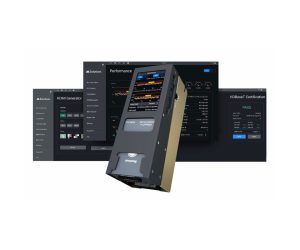
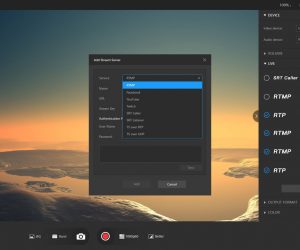
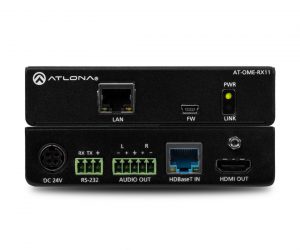

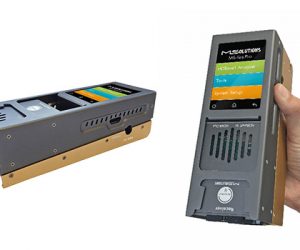
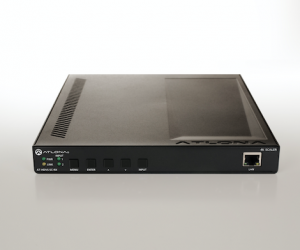
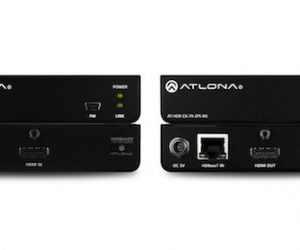
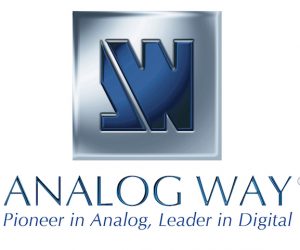
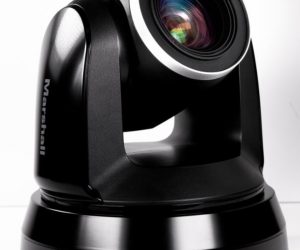
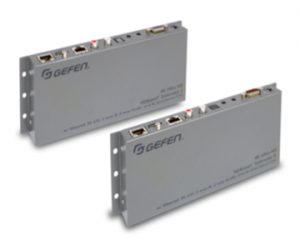
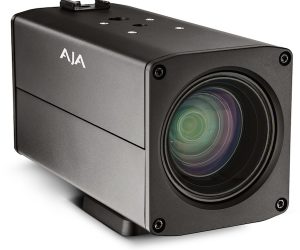



RESPONSES